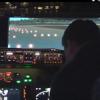
Sign in to follow this
Followers
0

Can't seem to loss speed even with the Spoilers out with AS2012
By
joolsd, in PMDG 737NGX | 737NGXu


By
joolsd, in PMDG 737NGX | 737NGXu